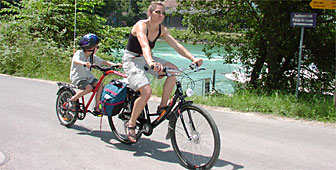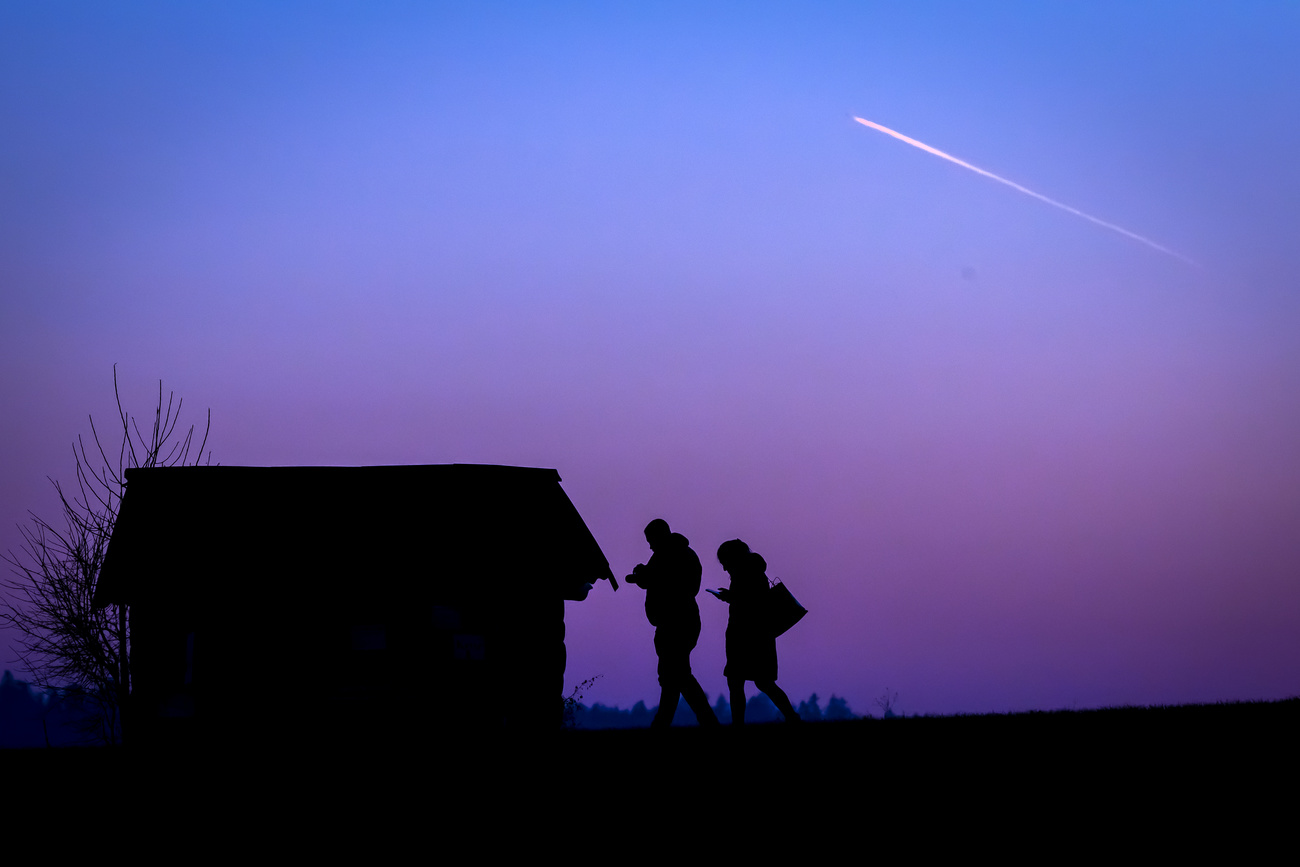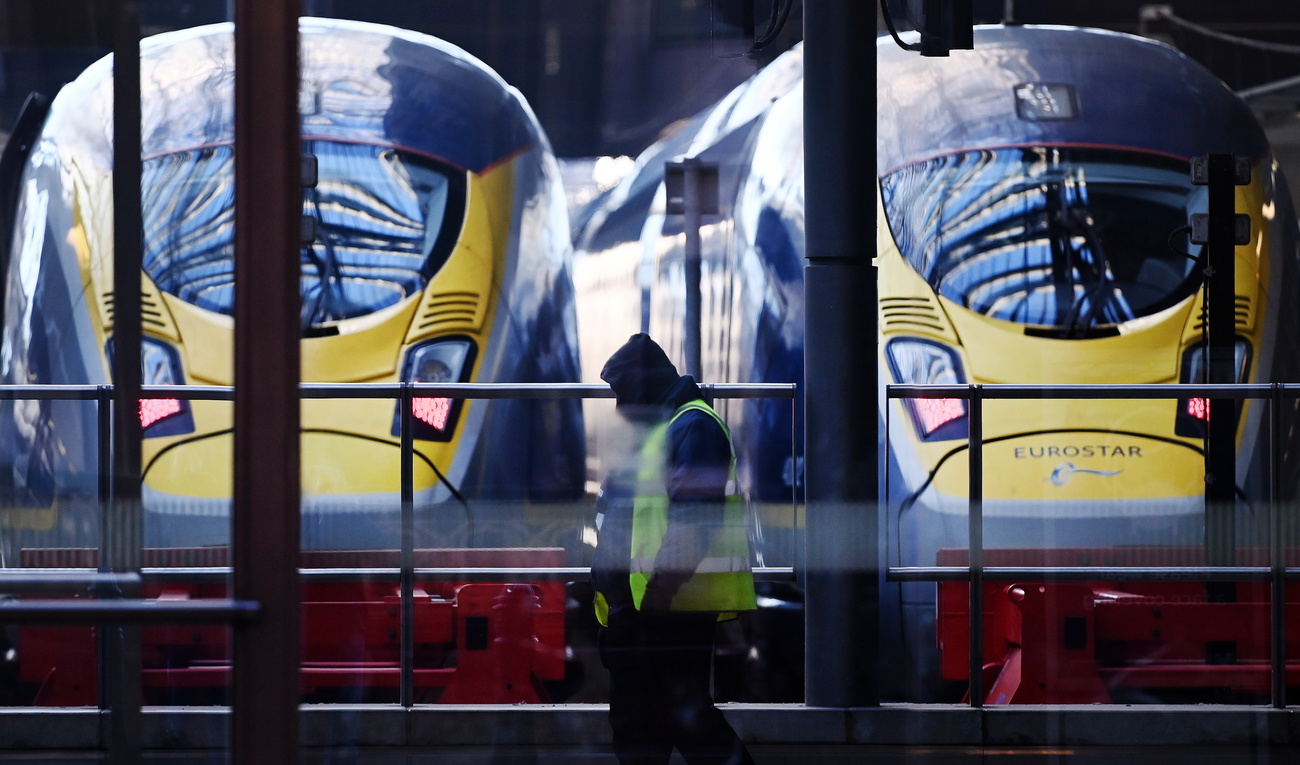On the road to Expo

Visitors to the Swiss national exhibition are being encouraged to travel to the various sites under their own steam - and getting there can be half the fun.
Helping people on their way is the Expo.02 project, Human Powered Mobility, which has so far proven a success. The project functions on two fronts: the first is a network of bicycle and inline skating routes connecting the four exhibition sites in Biel, Murten, Neuchâtel and Yverdon-les-Bains; and the second is conveniently located hire shops.
“When you come to the shop to get a bicycle you get a little map which is very basic, but it shows the three lakes, the 170 kilometres of signposted roads for bicycles and 90 kilometres for inline skates,” explains Patrik Mathys, who runs the hire company, Bike Station.
There is a Bike Station shop outside the main entrances of each of the four exhibition sites as well as in the village of Ins, strategically located in the middle of the network between Biel, Neuchâtel and Murten.
Resembling rickshaws
Bike Station charges SFr25 a day for either a normal bicycle, recumbent bike, or special three-wheeled bike resembling a rickshaw, designed for a disabled person and an able-bodied companion. There are also inline skates, bicycle trailers for kids and trail-a-bikes, which have a wheel-and-frame attachment that converts a regular bike into a tandem for an adult and child.
All the normal bicycles are the same size, which means a quick adjustment of the seat is all that is required to get someone on the road, and the gearshift is literally at your fingertips on the handlebars.
Within a few minutes, the woman at the Bike Station in Neuchâtel had us on our way, even though our request was anything but simple – two adult bikes, one for myself with a trailer at the back where our four-year-old daughter would spend the next few hours, and one for my wife along with a trail-a-bike for our son.
But before we set off for the 35-kilometre ride to the Expo site at Murten, I went over the map with Mathys, which proved unnecessary.
“The big advantage is you don’t really have to use a map, because the trails are signposted,” he said, reassuringly. “At every corner you see a new sign which shows you the way.”
Labyrinth
And Mathys was right. Well-placed red signs led us through a labyrinth of suburbs, industrial zones, and farmers’ fields as we flirted with the northwestern shore of Lake Neuchâtel.
This first stretch was anything but scenic; however, it is ideal if you want to see how the Swiss middle class live. The “Three Lakes Region”, as it has been dubbed for Expo, also has the advantage of being totally flat. It is not for serious bikers, but great if you have two kids in tow.
Hot problems
The day, however, wasn’t without its problems. It was hot and the bikes were not equipped with bottle holders, meaning that we had to dismount and fish our water bottles out of our saddlebags each time someone needed a drink.
Then we found that the bracket holding the trailer to the bike was loose and in danger of falling off. We couldn’t get it repaired until we arrived at the next Bike Station in Ins, the halfway point of our trip.
The highlight was crossing the Rotary Bridge. The curving wooden structure crosses the canal connecting lakes Murten and Neuchâtel and was built as a key element of the bicycle network, and is only for cyclists, walkers and inline skaters.
Vully vineyards
From the bridge, there were only a few kilometres to go. We skirted the northern flank of Mont Vully and its vineyards and then followed the railway tracks along the shore of Lake Murten.
We dropped our vehicles off at the Bike Station in Murten where we were greeted with a smile by a woman who scanned the computer codes on our bikes. That was all there was to it. There were no additional charges for not returning the bikes to our starting point in Neuchâtel, and no paper work.
And the bike station was only a hop, skip and a jump away from the main attractions of the Swiss national exhibition in Murten. We found we still had time left in the day to enjoy a few of the attractions before our train journey home.
by Dale Bechtel

In compliance with the JTI standards
More: SWI swissinfo.ch certified by the Journalism Trust Initiative










You can find an overview of ongoing debates with our journalists here . Please join us!
If you want to start a conversation about a topic raised in this article or want to report factual errors, email us at english@swissinfo.ch.